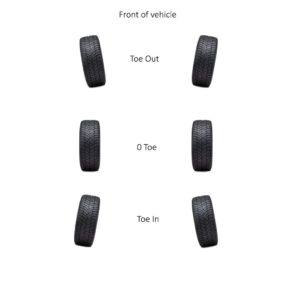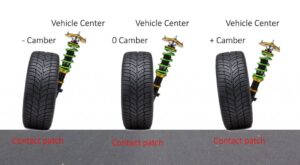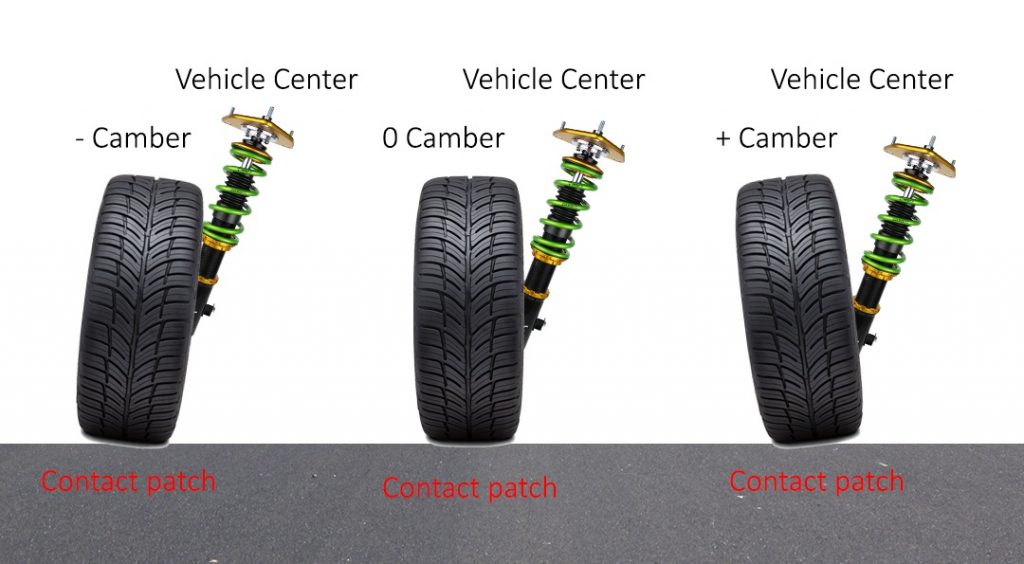As many people are aware, changing out suspension parts will most likely change the handling in your car. Now while some will promote over steer or under steer, some will just change the way your wheels make contact with the road and the angle your car moves.
While it is possible to force your car to drive straight with a bad alignment on a smooth surface, there are some huge downsides.
First off, when your alignment is uneven or not true, hitting bumps becomes a guessing game. Things like potholes, crowns in the road or even strips of seam sealer can cause your car to pull in an unexpected fashion.
Secondly, it’s also fairly unsafe.
Let’s review the 3 main points to an alignment.
To start, Toe.
Toe is the angle at which your tires are pointing. Stand up with your feet pointing straight ahead. This is 0 toe. Now if you angle your toes out slightly, that would be toe out. If you angle them in slightly, that is toe in.
With that in mind, pretend your feet are your tires on the car. To much toe in or out can cause the tires to wear quickly on the sides as well as make the car pull while driving down the road.

Second, Camber.
Camber is the angle at which the tops of your tires are tilted toward the center of your vehicle. A lot of people think camber creates an excessive amount of tire wear but that is actually a myth. Incorrect toe is the leading contributor to inner tire wear! The graphic below shows camber angles.

Lastly, caster.
Caster is angular displacement of the steering axis from the vertical axis of a steered wheel in a car.
You can see this difference pretty easily by comparing a 20inch bmx bikes front setup to that of a chopper. On the bmx bike, the wheel is centered directly underneath the handlebars, making the caster angle fairly small. On a chopper, the front wheel is often times stretched out past the handlebars which makes a pretty extreme caster angle.

With so many changes to your car after installing coilovers, correcting your alignment is a great choice to make. Many performance shops offer alignments based off the manufacturers specs, but also can offer “performance” alignments for improved handling on the track and different racing disciplines.

